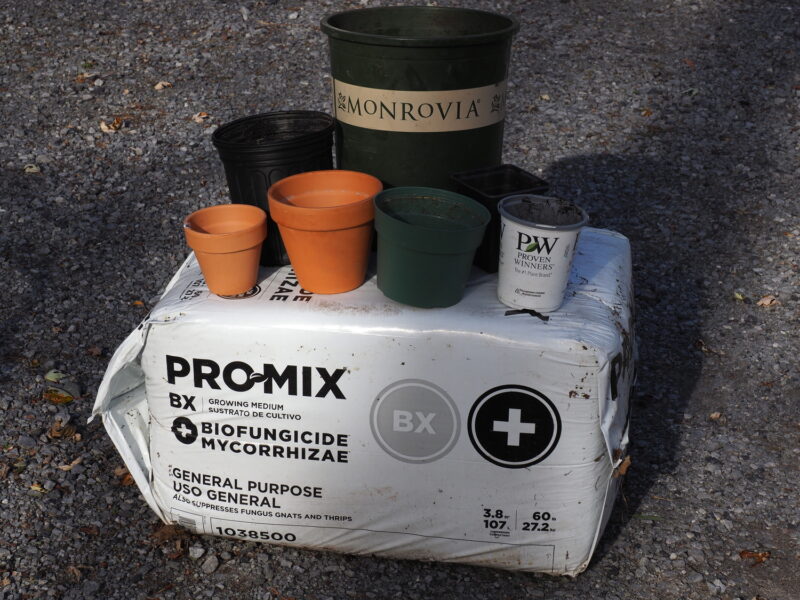

The year was 1967. I had just graduated from high school. The blockbuster and classic movie “The Graduate” had just been released.
In the opening scene Dustin Hoffman is a young man who has just graduated from college. We meet him at the graduation party his parents are throwing for him. It could have very well taken place here in the Hamptons. An older gentleman takes him aside to give him his sage advice. “Plastics!” he says. “The future is in plastics.”
And this is where I begin this week’s column and the few that will follow. By the time you get to the end of this series of columns you will learn every single thing you need to know about not plastics, but houseplants. Every single thing you need to know about buying them, which ones not to buy as well as every aspect of growing them. You’ll find out more than you can learn from a book, on YouTube or anywhere else online. Everything.
Now how do “The Graduate” and plastics relate to houseplants? There are actually two critical links. Prior to the late 1960s if you went to a garden center or nursery to buy a houseplant you would have found that each and every one was sold in a clay pot. There was no such thing as a plastic pot. This meant that most houseplants were sold in 4-to-10-inch pots as it was nearly impossible to ship plants in the larger pots due to their weight and the likelihood of the pot cracking and breaking in transit.
Many of these houseplants were actually grown here on the East End in long glass greenhouses. Right in Southampton there was a large greenhouse range in the area of Hampton Road and Flying Point Road that covered several acres under glass. But most of the houseplant growers were in the Moriches and the area around Islip and Bohemia where many Dutch and German families operated large glasshouse ranges for cut orchids, roses and houseplant production. The one operation I remember and used to buy my plants from was one of the Keil greenhouses. I would buy potted plants for the shops I was working with in Roslyn and Great Neck.
Then thin film plastics were invented, and as a result these films began to be used to “skin,” or cover, new types of greenhouses called hoop houses. They were quick to set up and by using two layers of plastic to create an air-filled bubble they were inflated with small fans. Inside these warm and humid “poly” houses there was enough light transmission to grow and propagate tropical plants. The greenhouses were much better insulated than the glass houses and much less expensive to operate even during the energy crisis of the 1970s. The glass houses began to disappear and be replaced by poly houses. The result was increased production, lower costs of production and a houseplant boom.
The second revolution in the tropical or foliage plant business followed shortly. An “injection” process was developed that allowed manufacturers to produce hard plastic pots as well as the softer black plastic nursery pots that many plants are now sold and shipped in. A 6-inch clay pot that weighed over a pound was replaced with a plastic pot weighing an ounce or less. This dramatic loss in weight opened striking new opportunities, but there was one more thing that happened that brings us to our current houseplants.
Up to the late 1960s houseplants were potted with actual dirt. The same stuff you dig up in your backyard. It had to be sterilized, and some peat was added, but the final potting mix was heavy so even in plastic pots those houseplants prior to 1970 were still heavy. Then the peat-lite soil mix was introduced by Cornell University.
This potting mix was a formula of cheap Canadian peat moss mixed with perlite, vermiculite and in some cases some sand. The houseplant industry now had heating-efficient greenhouses for growing, lightweight plastic pots for containers and peat-lite soil mixes that were light weight, and no sterilization of the soils was needed. A third revolution then took place that brought us to the third stage of the houseplant explosion in popularity.
Since your typical 6-inch (pot size) houseplant’s weight had dropped from several pounds to just several ounces they didn’t have to be grown on Long Island or even in New York. The value of real estate on Long Island made it nearly impossible for local growing operations to continue, and nearly all of them moved to Florida, a few other southern states and Canada. Even with the cost of trucking considered, the plants could be grown hundreds to a thousand miles away and still cost substantially less than anything that could be grown locally.
But Canada? Inexpensive hydro-powered electricity became available from Quebec, and this enabled Canadian growers to be competitive with the growers as far away as Florida. Since the plants were being grown in a “soilless” peat-lite potting mix (with Canadian peat) the shipments were immune from the total restrictions at the U.S. border that forbade the importation of any plant material grown in natural soil.
And this brings us to the latest iteration of the houseplant craze or phenomenon. It’s somewhat due to there being two or more generations who skipped houseplants, and while there is little new under the sun in terms of really “new” houseplants, there are some things that are new. One is the use of cloning and genetics that are used to enhance certain traits like plant height and foliage colorations. The second is the discovery and exploration in Asia for new houseplant options. There are several of these “new” plants, but so far I really don’t see any that are particularly notable other than species of plants that we’ve been growing for years that have more dramatic foliage in terms of colors and interesting variations in foliage characteristics like cut leaves and serrated leaves that provide new foliage patterns.
Back to the beginning in 1967. If you were to drive from Queens and head to Manhattan over the 59th Street bridge as you approached the center of the span you could look to the right in the distance and there, atop the building at 409 East 60th Street, you would see, of all things, that the top of the building was covered with a greenhouse. This was a commercial greenhouse filled with tropical foliage, i.e. houseplants.
This was the home of Terrestris, a new business that sold and rented nothing but houseplants. They were the leader and innovator of the time who started bringing these plants up from their Florida nurseries to their Manhattan location. Not only was the place amazing but also they were one of the first companies in the city that would rent and maintain tropical foliage in buildings throughout the city. They were also on the vanguard of where we could buy houseplants that were “hardened off.”
That was a process of gradually reducing the light that the plants received so they could be acclimated to their new homes in our offices and homes. Plants were available in pots as small as four inches and some so large that dollies and several sets of hands were needed to move them around and out of the building. The company also produced some excellent publications that I’ll refer to in the next installment, and hopefully I’ll be able to share some of their charts and guides with you as well.
In the meantime, as local garden centers begin to clean out space for winter merchandise there are some great houseplant bargains around. Shop on a day that’s mild as some of these plants are very sensitive to sudden temperature changes. Also make sure there is a label on the plant indicating its name, preferably the genus and species. This can be the clue to its care once you get it home. If the tag simply says “Tropical Foliage” or “Houseplant,” ask for more information. You’ll find that very helpful as we move along.
Next week, the specifics that will make you a terrific plant dad or mom. Maybe not a green thumb but certainly not a black thumb if you simply follow the information. Keep growing.
 More Posts from Andrew Messinger
More Posts from Andrew Messinger